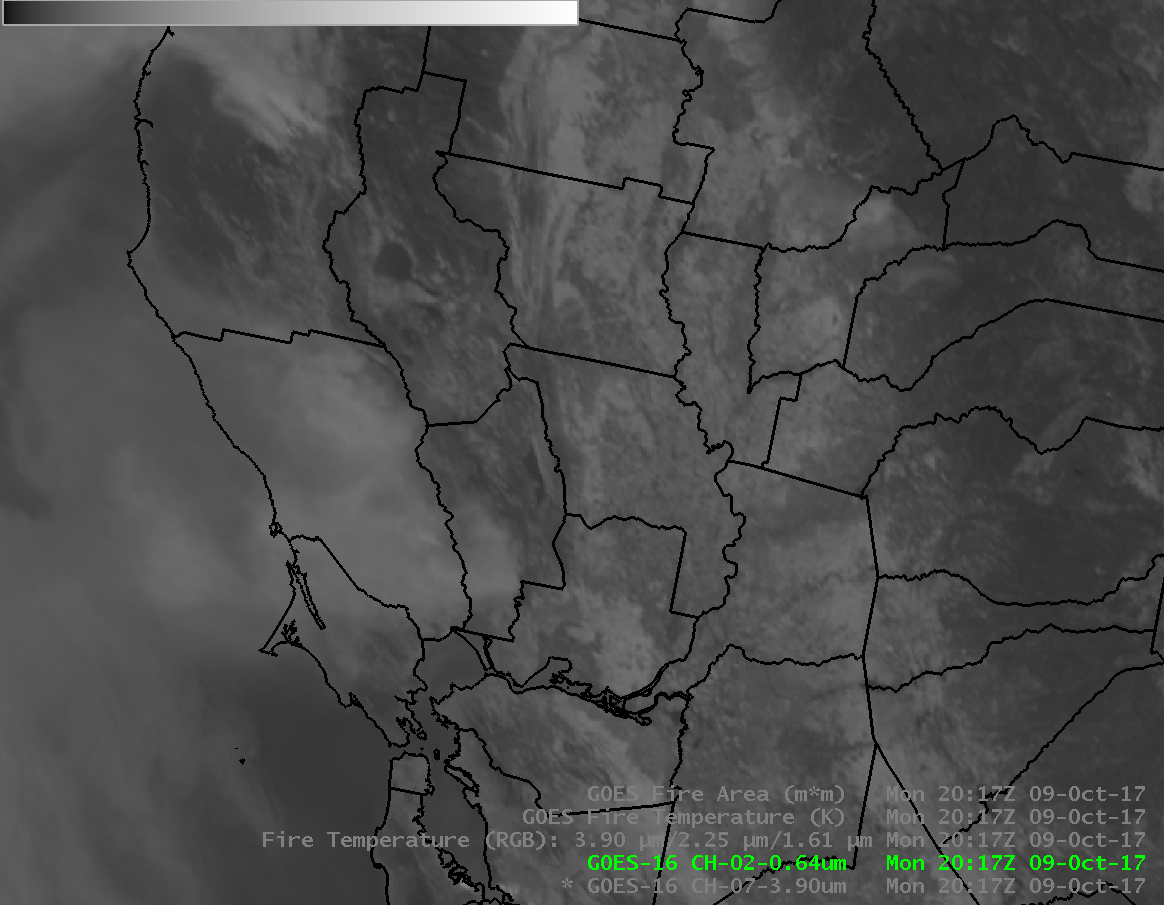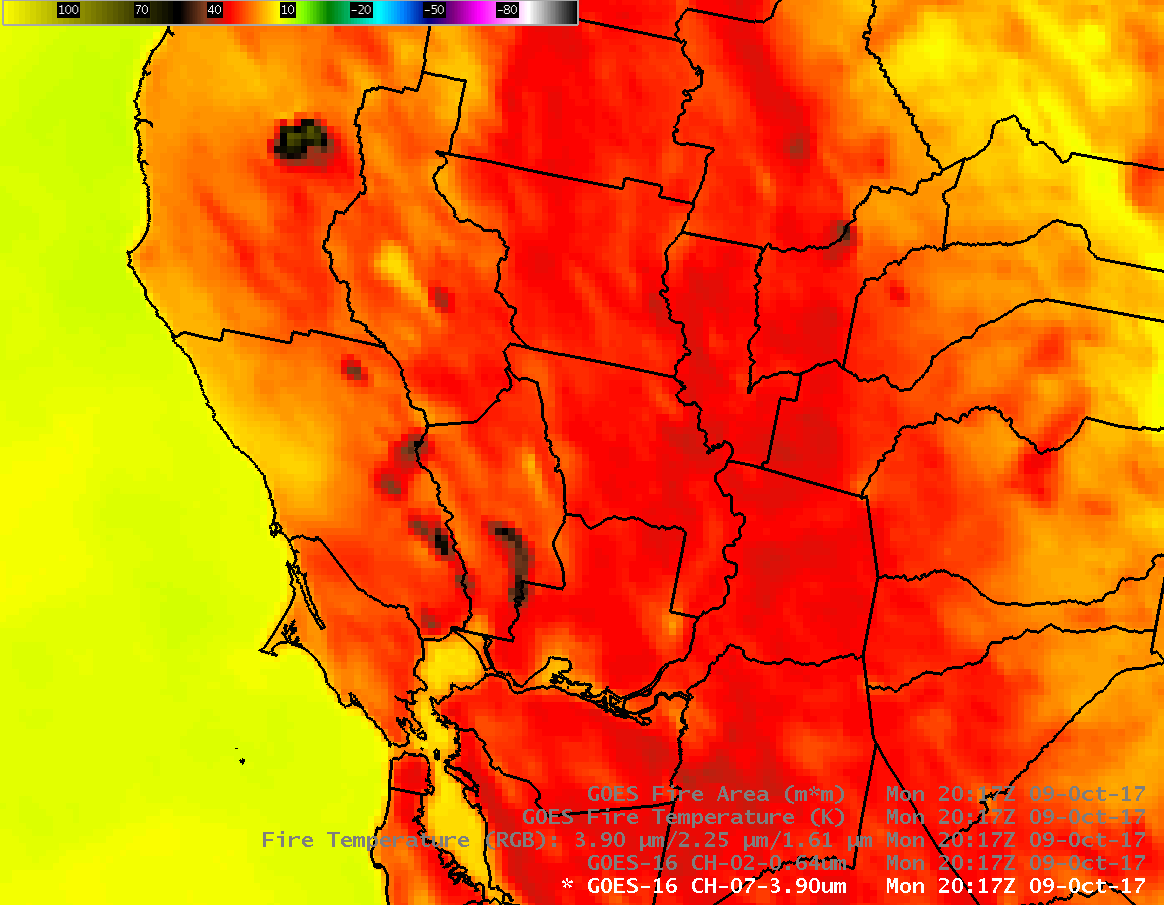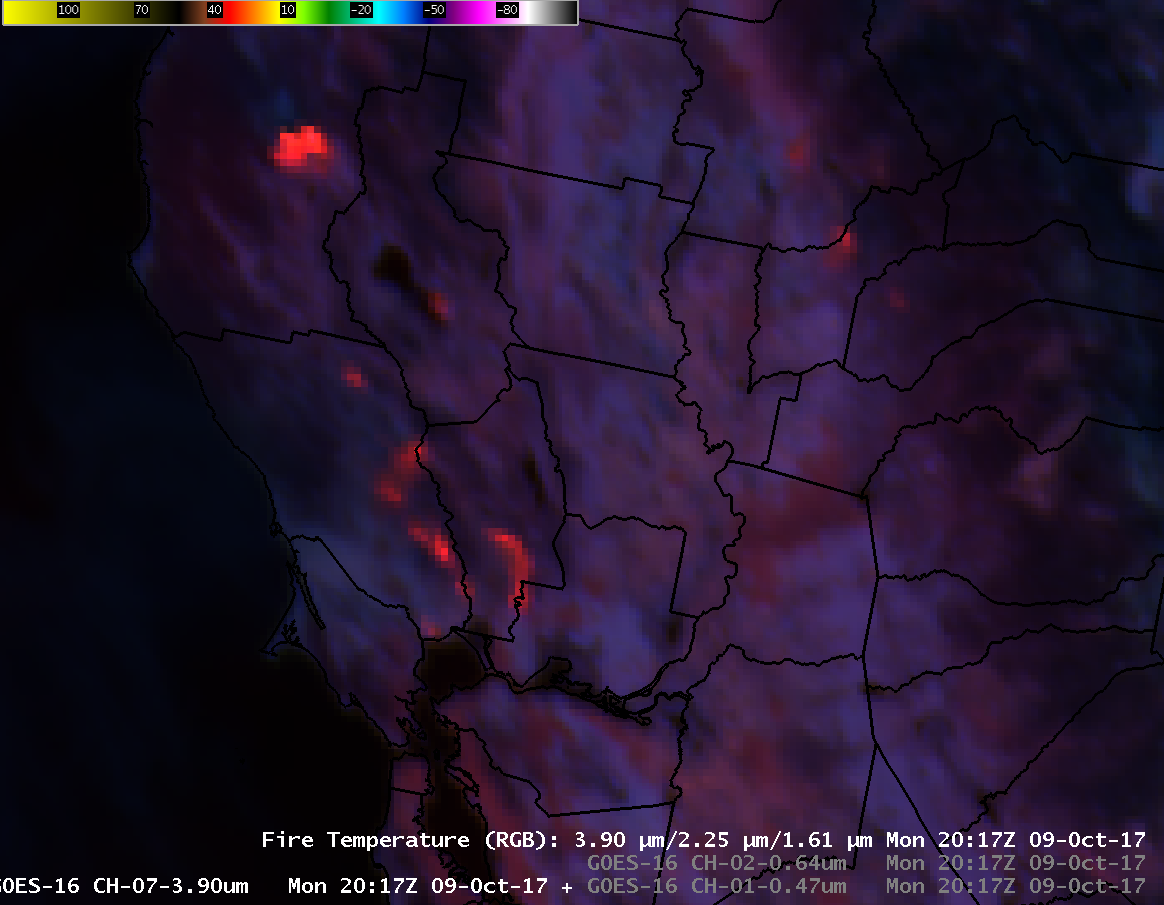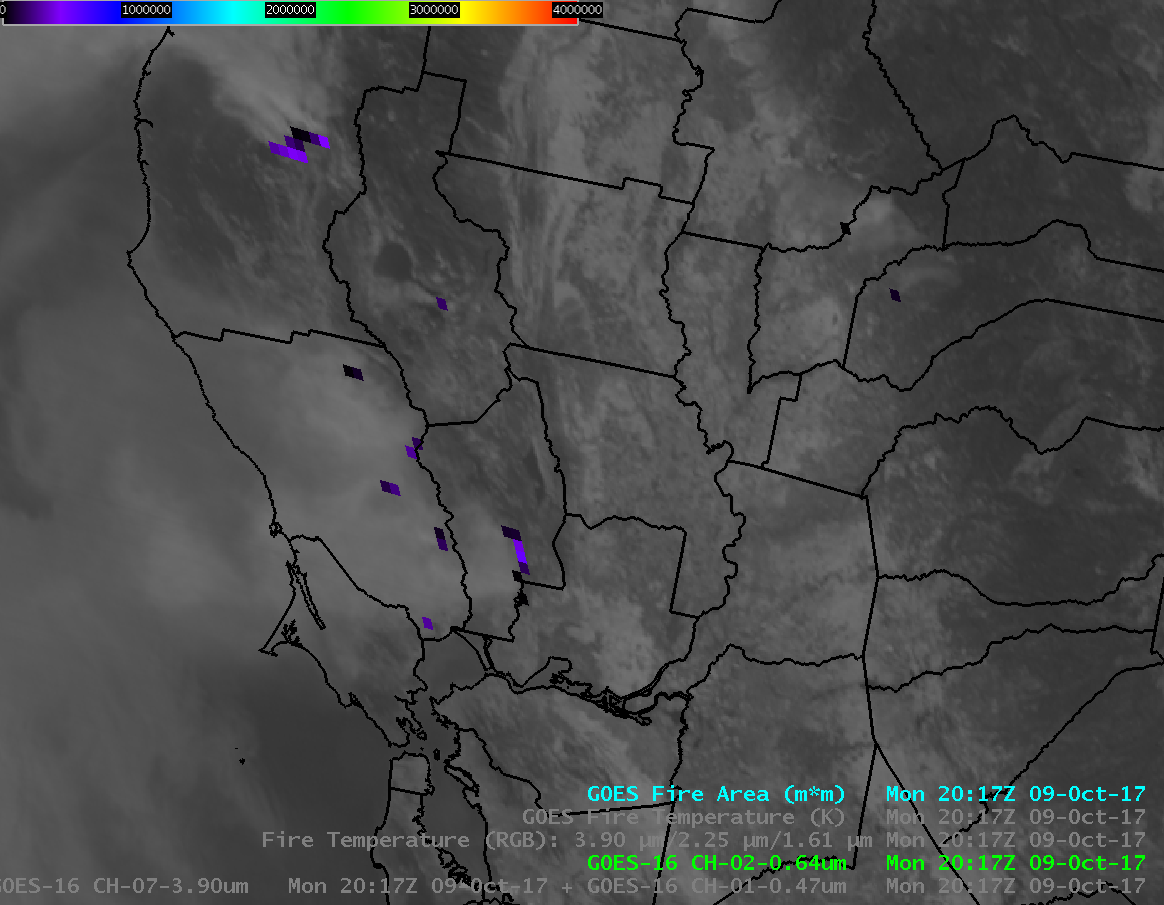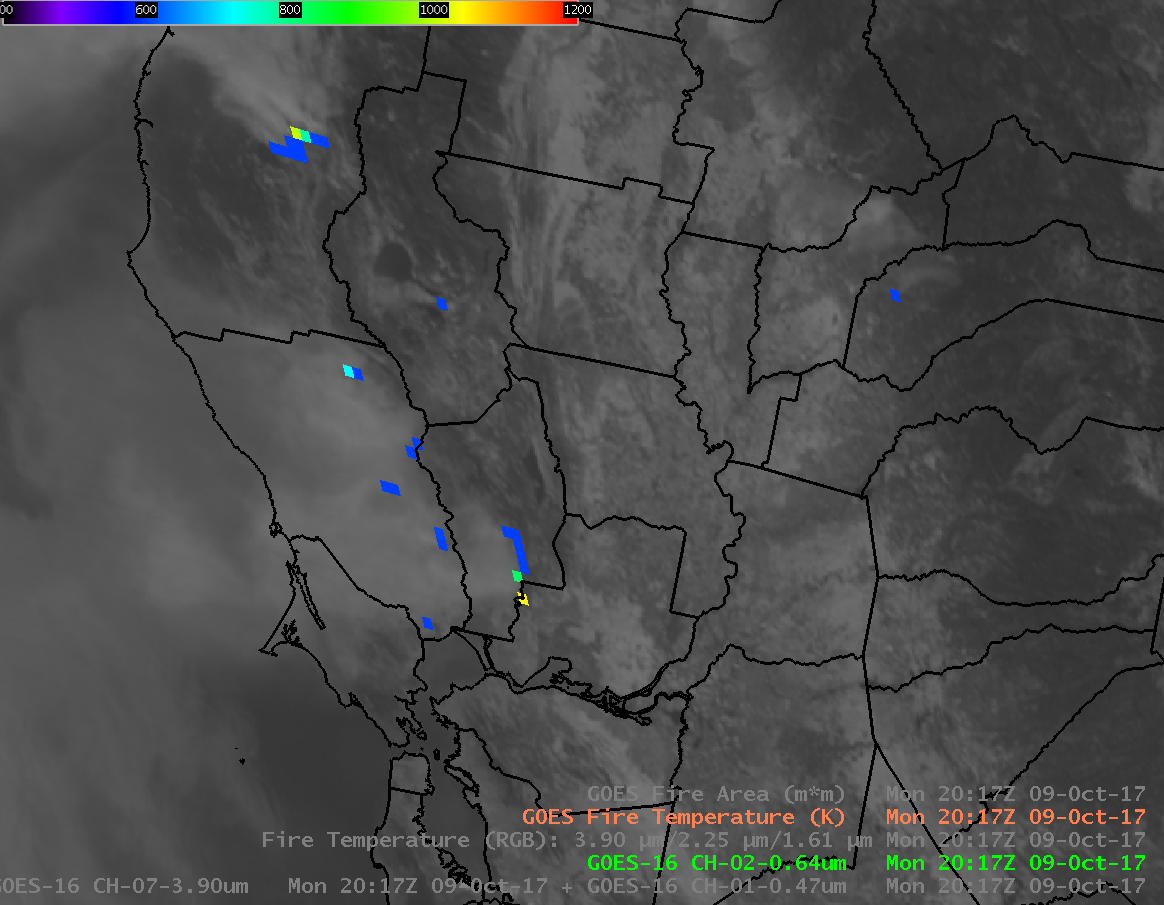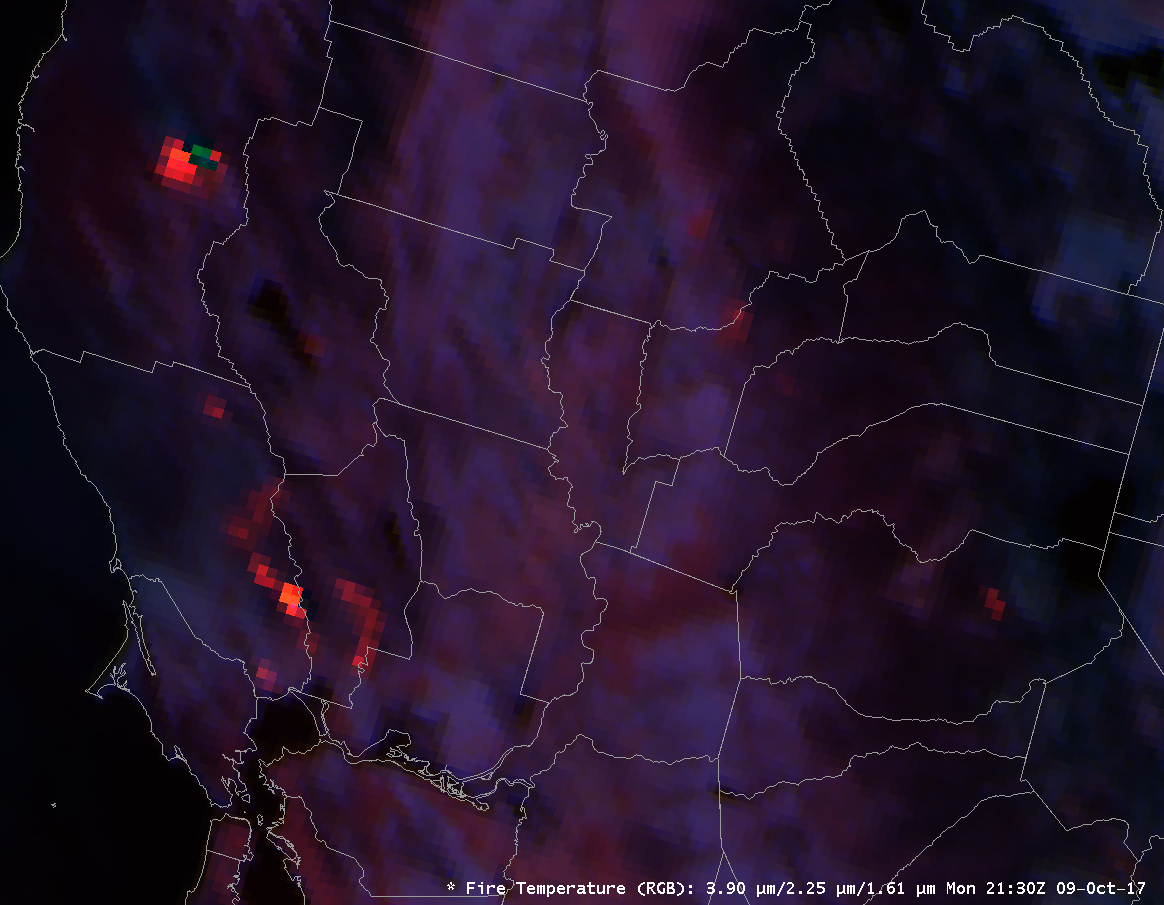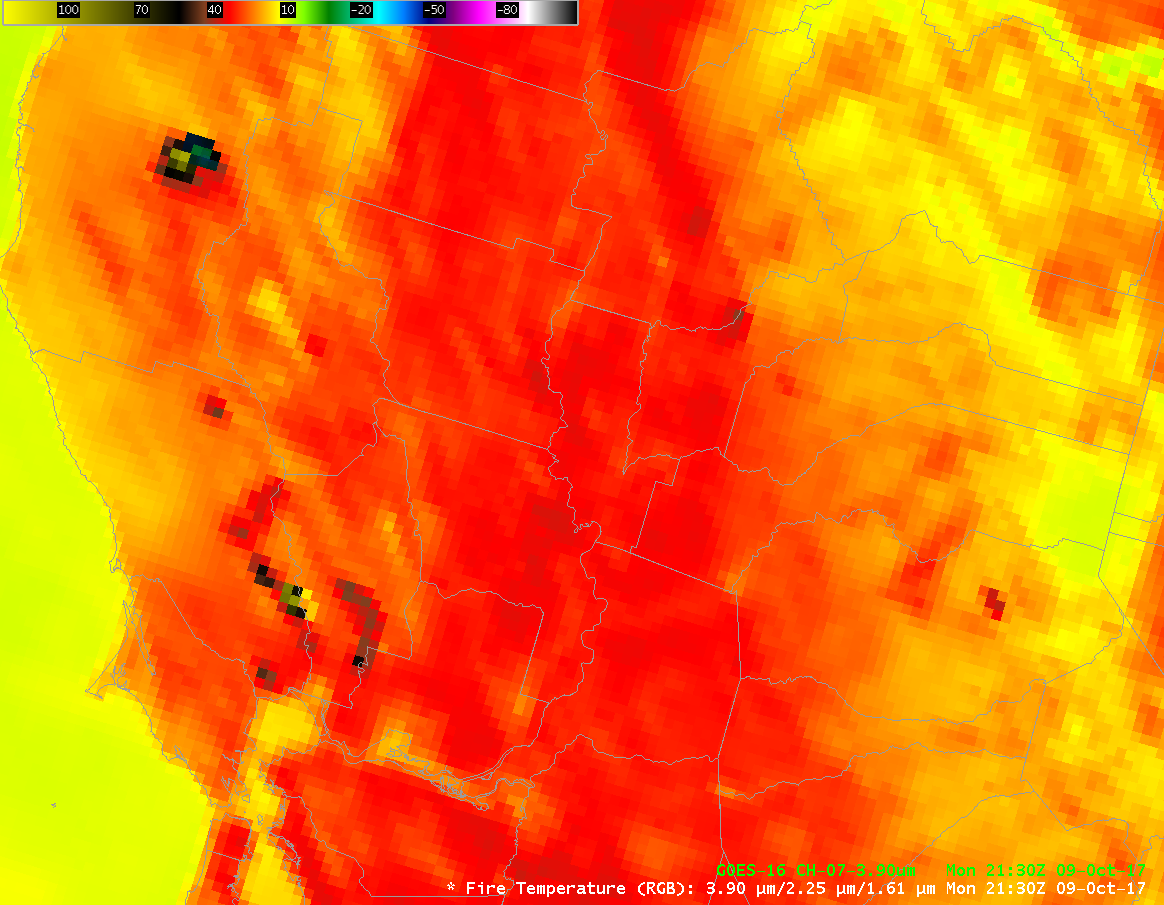GOES-16 Tools to Observe and Monitor Fires
GOES-16 data posted on this page are preliminary, non-operational and are undergoing testing.
GOES-16 provides many tools to the Operational Meteorologist, and to National Weather Service Incident Meteorologists (IMETs), to monitor fires when they occur, such as those over Napa and Sonoma Counties in California (Blog Post). Visible (0.64 µm) and Shortwave Infrared (3.9 µm) channels, above and below, respectively, are available routinely at 5-minute intervals over the Continental United States. During daytime, the Visible Imagery is useful for highlighting smoke palls and for alerting meteorologists to any wind changes. The Shortwave Infrared has long been used to detect fires; the shortwave infrared channel on GOES-16 can detect hotter and smaller fires than previous GOES Satellites because of improved spatial resolution and improved bit depth in the imagery.
GOES-16 Channels can be combined to create Red Green Blue (RGB) Composites that also help identify fires qualitatively. The Fire RGB, below, combines the shortwave IR (3.9 µm) with the 2.2 µm and 1.6 µm channels; as fires get warmer, radiation is emitted at shorter and shorter wavelengths. When this RGB shows white values, you can be certain that the fire is very hot. At some times in the RGB animation, the 3.9 µm imagery is missing where the fire is exceptionally hot, meaning the ‘red’ component of the RGB has no value, and the RGB acquires a blue and green hue.
The Fire Temperature RGB like the visible imagery shown above offer qualitative information about fire. More quantitative information is available in GOES-16 Baseline Products that are an extension and refinement of the WF-ABBA products available for GOES-13 and GOES-15 (and other satellites). Fire-related products for GOES-16 include Fire Area and Fire Temperature, shown below. The products give the size of the fire within the pixel, and its temperature. These products are valuable in quickly evolving fires to monitor how things change, and the products are available every 5 minutes.
Finally, GOES-16 has 1-minute Mesoscale Sectors that can be used to closely monitor quickly-evolving fire situations. The 3.9 µm shortwave infrared and Fire RGB images are shown below for a two-hour period. There can be significant changes to a fire in 1 minute, as was seen in this Blog Post! Note again that missing points in the 3.9 µm imagery will show up as green or blue regions in the RGB.


